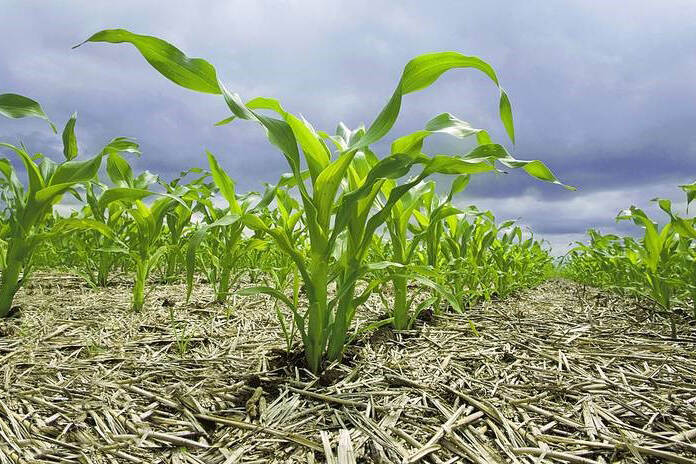Corn at the Centre – a Core of Circular Agriculture in Argentina?
The Maizar congress of the Argentine Corn and Sorghum Association/ (Asociación de Maíz y Sorgo de Argentina), is a classic annual event within local agriculture. This year, the congress entitled MAIZAR 4.0, took place virtualy on the 30th of June and gathered more than 6000 attendees. The minister of Argiculture, Basterra, made opening remarks alongside Maizar’s president. Numbers are looking good for the sector.
One of the topics at hand: does corn define the future of agro-sustainability? The Netherlands has recently started a process of transformation towards circular agriculture. In this type of farming the soil is the first natural resource to take care of for future generations, something to which Argentina has been paying great attention for years. In this sense, a good rotation scheme integrates corn as a key crop of the system, which is no news for the Argentine producer.
The Maizar 4.0 Congress also provides talks on post-pandemic scenarios, and to the ideas of international specialists on how health, the economy and food together will set the course of technological changes in production systems and new forms of trade.
Good news for the sector: numbers
For the first time in 23 years, corn production volume surpassed soy. Corn production 2019/20 reached 42 million tons. The main destination is exports (67%), while 25% goes to animal consumption and 8% to milling and ethanol.
There are 250,881 farms in the country, of which 77,691 with corn and sorghum. Corn is the key link in meat and dairy chains. Taking into account the complete chains, it can be said that corn means 16% of Argentina's exports and 4.5% of the country’s GDP (USD 20 billion).
The central region of Argentina, formed by the Provinces of Córdoba, Santa Fe and Entre Ríos, concentrates the largest growing area, as well as the largest number of producers of poultry and pig meat. This region concentrates 65% of the dairy base, 81% of bioethanol, 44% of the pig chain and 30% of bovine production. Entre Ríos province produces more than 50% of the country's poultry meat.The province of Córdoba produces 38% of the cereal (21 million tons), followed by Buenos Aires (25%) and Santa Fe (15%).
Ten years ago, for every hectare of corn there were 4 hectares of soybean. In 2020 there were 1.5, reflecting the encouragement of good agricultural practices that provinces implemented. In Córdoba 35% of the grain is processed, most of it goes to ethanol (32%), dairy farms (23%), livestock (production) (12%), swine (12%); and wet (9%)and dry milling (2 %).

Environmental demands and the carbon neutral approach
The organizers of MAIZAR 4.0 indicated that "Corn is the most industrialized crop in the country, made with the most sustainable practices in the world." The Nature Conservancy (TNC), also presenting in a session, argued that the Corn chain is the answer to new environmental demands. Argentina is a pioneer in good practice protocols: direct sowing, service crops, protecting natural habitats, caring for the use of inputs, are all usual practices in the country’s agricultural practices, yet in the rest of world are far from being applied.
The Green Deal of the European Union was also commented, especially the concept of carbon neutrality in 2050. Argentina’s agricultural producers propose new principles for the evaluation of impacts related to the carbon cycle, another key factor of circular agriculture. While the carbon footprint considers only emissions (amount of carbon emitted per unit of marketed product) and tends to prevail in the international agro-food markets, Argentina organizations propose a concept that integrates both emissions and the capacity to capture carbon in biomass and the soils. Ernesto Viglizzo, the main referent on the subject and senior researcher at the national agriculture research institute and CONICET, spoke about "Carbon Balance". This can be measured per hectare of land destined for production. This approach would really evaluate the carbon related sustainability of the productive systems.
The Argentine Carbon Neutral Program for Food, Drinks and Export Bioenergies (PACN) is a private, voluntary initiative of the Cereal and Commerce Chambers of the entire country, which aims to environmentally map national production and implement management plans to certify the carbon balance of Argentine export products.
The circular agriculture approach proposed by the Netherlands will undoubtedly be a concept to analyse in combination with the advances that are already taking place in Argentine agriculture.
Government plans
Export duties and local taxes are also factors that can change the course of sustainability. According to the Fundacion Agropecuaria para el Desarrollo de la Argentina (FADA) (Agricultural Foundation for Argentina’s Development), the participation of taxes on agricultural income is on average 68.3% for of soybean, corn, wheat and sunflower crops.
In the near future, no changes in tax conditions are expected for primary production. The plan of the national government focuses on the transformation of corn into meat from regions of the country far from the ports and being able to export a diversified offer of products, as well as knowledge. Future markets of interest are the countries of Latin America and countries of the African continent, as the State Secretary for International Trade indicated.